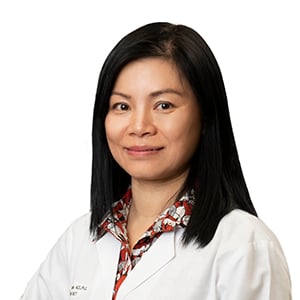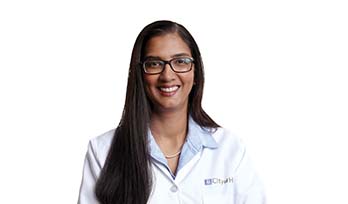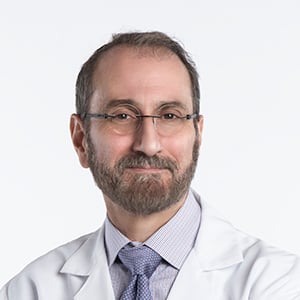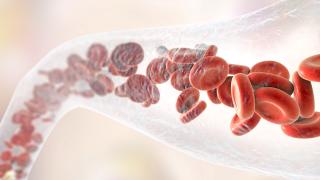Physicians and scientists with City of Hope® presented data on potential new treatment options for blood cancers at this year’s American Society of Hematology (ASH) conference in San Diego, California, held Dec. 9 to 12.
City of Hope researchers discussed the creation of personalized DNA vaccines that can trigger the immune system to resist the growth of early lymphoplasmacytic lymphoma, also called Waldenstrom macroglobulinemia; targeting and eliminating leukemic stem cells with innate lymphoid cells (ILC1s); and intriguing approaches for overcoming resistance to CAR T cell therapy.
“The exciting findings presented at the ASH 2023 conference illustrate the exceptional science unfolding across a wide spectrum of hematologic malignancies and the welcome optimism these discoveries can bring to our patients,” said Eileen Smith, M.D., City of Hope’s Francis & Kathleen McNamara Distinguished Chair in Hematology & Hematopoietic Cell Transplantation. “City of Hope and our colleagues at Translational Genomics Research Institute and City of Hope Phoenix, Atlanta and Chicago continue to pursue advances that will enhance the survival and quality of life for people with blood cancers.”
Highlights of City of Hope research presented at the ASH conference include:
Improving CAR T for Lymphoma
CD19 chimeric antigen receptor (CAR) T cell therapy has revolutionized the treatment landscape of B cell lymphoma. By genetically altering patients’ T cells in the lab, scientists can program the immune cells to seek and destroy cancer cells with the CD19 antigen.
Unfortunately, a significant number of patients with aggressive B cell lymphoma, mantle cell lymphoma or follicular lymphoma still relapse or don’t respond after CAR T cell therapy.

Seeking an alternative approach to improve patient outcomes, Larry Kwak, M.D., City of Hope vice president and deputy director of its comprehensive cancer center and the Dr. Michael Friedman Professor in Translational Medicine, and his lab focused on B cell activating factor receptor (BAFFR) signaling, a driver of B cell and cancer growth. Reducing BAFFR expression, they hypothesized, could limit the ability of B cell tumors to dodge therapy.
Malignant B cells express BAFFR independently of CD19 expression, subsequent studies found, and CAR T cells targeting BAFFR were able to eliminate B cell tumors in a preclinical setting.
In a clinical trial lead by Elizabeth Budde, M.D., Ph.D., an associate professor of hematology and hematopoietic cell transplantation and the executive medical director for the Immune Effector Cell Therapy Program at City of Hope, the team treated three B cell lymphoma patients in a Phase 1 clinical trial evaluating the safety and efficacy of therapy with autologous BAFFR CAR T cells. All were male, ages 41 to 75 years old. Two faced a poor prognosis after prior CD19 CAR T cell therapy did not halt their tumor growth. A third patient did not have CD19 expressed on his lymphoma cells.
In an exciting reversal, all three patients had a complete response (100% complete response rate).
All three patients experienced robust CAR T cell expansion, peaking on day 12 in patient No. 1 and day 14 in patients 2 and 3. The therapy also cleared lymphoma cells from the bone marrow of all three patients 28 days after CAR T cell infusion.
While each patient developed low-grade side effects, these resolved safely with time or medication. No dose-limiting toxicities were seen. The study, sponsored by PeproMene Bio Inc., is now enrolling patients in its next cohort. (Kwak is PeproMene’s scientific founder, compensated chair of its Scientific Advisory Board and has an equity interest in PeproMene. City of Hope holds an interest in the investigational therapy BAFFR(EQ)BBζ/EGFRt+ CAR T cells, the therapy being studied in this research.)
“We were delighted to see complete remission of B cell lymphoma with this approach,” Budde said. “Each of our three patients’ cancers had not benefited from several previous lines of treatment. We hope BAFFR-CAR T therapy offers a promising new option for lymphoma patients struggling with relapse or progression.”
Bispecific Antibody Combo Shows Promise for Relapsed Lymphoma
New therapies for patients with relapsed or drug-resistant large B cell lymphoma remain an area of unmet need. A Phase 1b/2 study examined the effects of gradually increasing doses of mosunetuzumab in combination with polatuzumab vedotin (pola) on aggressive lymphomas that did not respond to prior treatment. Budde presented the oral abstract at ASH conference, which simultaneously published in Nature Medicine.

Mosunetuzumab is a bispecific antibody that engages and redirects T cells to eliminate malignant B cells. One arm targets the CD3 protein on T cells, an immune cell that fights against cancer once activated, and a second arm binds to CD20, a protein commonly found on lymphoma cells.
“The two cell groups are pulled together, with mosunetuzumab serving as a kind of bridge,” Budde said. “The close proximity triggers the activated T cells to recognize and attack the lymphoma cells, while polatuzumab vedotin finds and kills dividing B cells.”
A group of 120 patients, who ranged in age from 20 to 88, were enrolled in the trial. Seventy-one percent were male. They received mosunetuzumab intravenously every 21 days for a minimum of eight cycles and up to 17 cycles. On the first six cycles, they also were infused with pola. Both therapies were manufactured by Genentech.
Twenty-two patients participated in the dose-escalation group to determine the maximum tolerated dosage. Another 98 patients participated in the dose-expansion group.
Patients with a complete response ended mosunetuzumab after cycle eight. Those with stable disease or partial response at the end of cycle eight continued the drug for 17 cycles.
Half of the patients in the dose-expansion group achieved a complete response rate, meaning their cancer could not be detected. In 62% of the patients, their cancers shrunk or disappeared after treatment.
Median progression-free survival was 9.6 months and overall survival was 23.3 months, with a median follow-up of 18.6 months. Less than 15% of patients experienced adverse side effects; the most common symptoms were fatigue and low white blood cell count.
“This combination approach produces a favorable safety profile with highly durable responses, making it suitable as a second-line therapy for patients with relapsed or refractory aggressive lymphomas that are not eligible for a stem cell transplant,” Budde said.
Personalized Vaccines Attack Pre-Cancerous Blood Disorder
In lymphoplasmacytic lymphoma (LPL), abnormal white blood cells multiply rapidly in the bone marrow, displacing healthy blood cells and reducing the immune system’s ability to make new blood cells.
No therapies currently exist for patients in the cancer’s early asymptomatic stage, called smoldering Waldenström macroglobulinemia. Believing that early treatment does not enhance patient survival, the current standard of care advises oncologists to postpone treatment until the disease progresses.
Now City of Hope scientists have conducted the first clinical trial of a personalized therapeutic DNA vaccine as an early intervention for patients with asymptomatic LPL.
Developed in Kwak’s laboratory, the personalized DNA vaccine platform encodes a protein derived from the patient’s lymphoma cells fused to a molecule that targets the vaccine to antigen-presenting cells in the body. The vaccine was designed to trigger T cell immunity against the patient’s lymphoma cells.
In 8 out of 9 patients, the vaccine slowed the cancer's growth in the bone marrow. This extended their median time to disease progression to 5.1+ years versus a median time to progression of 3.9 years in earlier studies. The vaccine was well tolerated with no dose-limiting toxicities.
“Therapeutic anti-cancer vaccines offer a promising strategy for harnessing a patient’s own immune system to fight cancer at the disease’s start,” explained Szymon Szymura, Ph.D., first author and City of Hope staff scientist. “Our study suggests that a personalized vaccine provides a feasible early intervention for patients with asymptomatic LPL.”
Liso-Cel CAR T Shows Promise for Resistant Blood Cancers
No standard of care exists for patients with relapsed or refractory chronic lymphocytic leukemia and small lymphocytic lymphoma who develop resistance to treatment with venetoclax or Bruton tyrosine kinase inhibitor (BTKi). These patients often face poor outcomes, underscoring a critical unmet need for effective new therapies.
Now a new study presented at ASH found that liso-cel, an autologous, CD19-directed, 4-1BB CAR T cell therapy product, showed efficacy in resolving heavily pretreated chronic lymphocytic leukemia and small lymphocytic lymphoma.
“Our findings suggest liso-cel offers a promising alternative for high-risk patients whose cancers have not benefited from previous traditional approaches,” said principal investigator Tanya Siddiqi, M.D., medical director of lymphoma at City of Hope Orange County and director of the Chronic Lymphocytic Leukemia Program at the Toni Stephenson Lymphoma Center at City of Hope.

Siddiqi led the testing of liso-cel in a Phase 1/2, single-arm, multicenter TRANSCEND CLL 004 clinical trial. To qualify, patients must have received at least two prior lines of therapy, including a BTKi. Of 118 total patients, 54 had previously failed BTKi and venetoclax therapies. Participants underwent chemotherapy to lower their white blood cells and prepare the body for CAR T cells before receiving liso-cel in one of two target doses.
“A single dose of liso-cel produced rapid, deep and durable responses in this difficult-to-treat patient population and had a manageable safety profile,” said Siddiqi. “We were pleased to see these measurable results.”
The primary endpoint of complete remission rate was met at 20%, with high undetectable minimal residual disease rates at approximately 60% in the blood and bone marrow. Of nine patients who experienced a best overall response of complete remission in this subgroup, eight have ongoing complete remission.
After four years of follow-up, one patient completed the last assessment of the study in complete remission. Another patient — who had best overall response of partial remission at primary analysis — improved without additional therapy to complete remission with incomplete count recovery at 18 months.
The median follow-up was 23.5 months. With longer follow-up, Siddiqi observed, liso-cel may continue to elicit complete remissions and high undetectable minimal residual disease rates.
Chimeric Antibody Homes in on Cancer-Causing Stem Cells in AML
Leukemic stem cells lack a specific membrane-surface antigen that distinguishes them from normal stem cells. Without a molecular target, it’s been challenging for scientists to develop a therapy to eliminate leukemic stem cells and overcome treatment failure.
To find a therapeutic workaround for acute myeloid leukemia (AML), City of Hope researchers created a mouse-human chimeric bispecific T cell engager called BiF002 that incorporates a human form of immunoglobulin G. The research was presented as an oral abstract at ASH.

The approach equips the chimeric antibody to simultaneously bind to IL1RAP, a protein linked to inflammation during cancer development, and to the CD3 protein on T cells. The two proteins’ close proximity triggers the T cells to kill the leukemic stem cells expressing IL1RAP.
In three different mouse models, BIF002 significantly impeded disease progression and prolonged the lives of mice with human AML, all without causing side effects, observed researcher Yi Zhang, Ph.D., a visiting scholar of hematologic malignancies translational science in the lab of Guido Marcucci, M.D.
“Our treatment not only killed leukemic stem cells in the first set of mice but prevented the cells from starting disease after we transplanted them into a second set of mice,” Zhang said. “The second group of mice survived 200-plus days without further treatment. In contrast, the control mice lived only 26 days.”
Despite the latest therapies, only 30% of people with AML survive five years after diagnosis. Patients are often extremely sick and must remain hospitalized because their blood and immunity are compromised by the leukemia and the treatments. While stem cell transplants can prolong life, many patients don’t qualify due to their age, other medical issues or the inability to find a matched donor.
BIF002 targets the cancer-causing stem cells that most AML treatments do a poor job of eliminating, Zhang emphasized.
“If we succeed in bringing our findings into the clinic, we could create a treatment that targets the leukemia stem cells responsible for the dismal survival odds of AML patients,” she said. “Because our approach relies on an antibody, it eliminates the toxicity of chemotherapy and the need for a stem cell transplant donor.”
